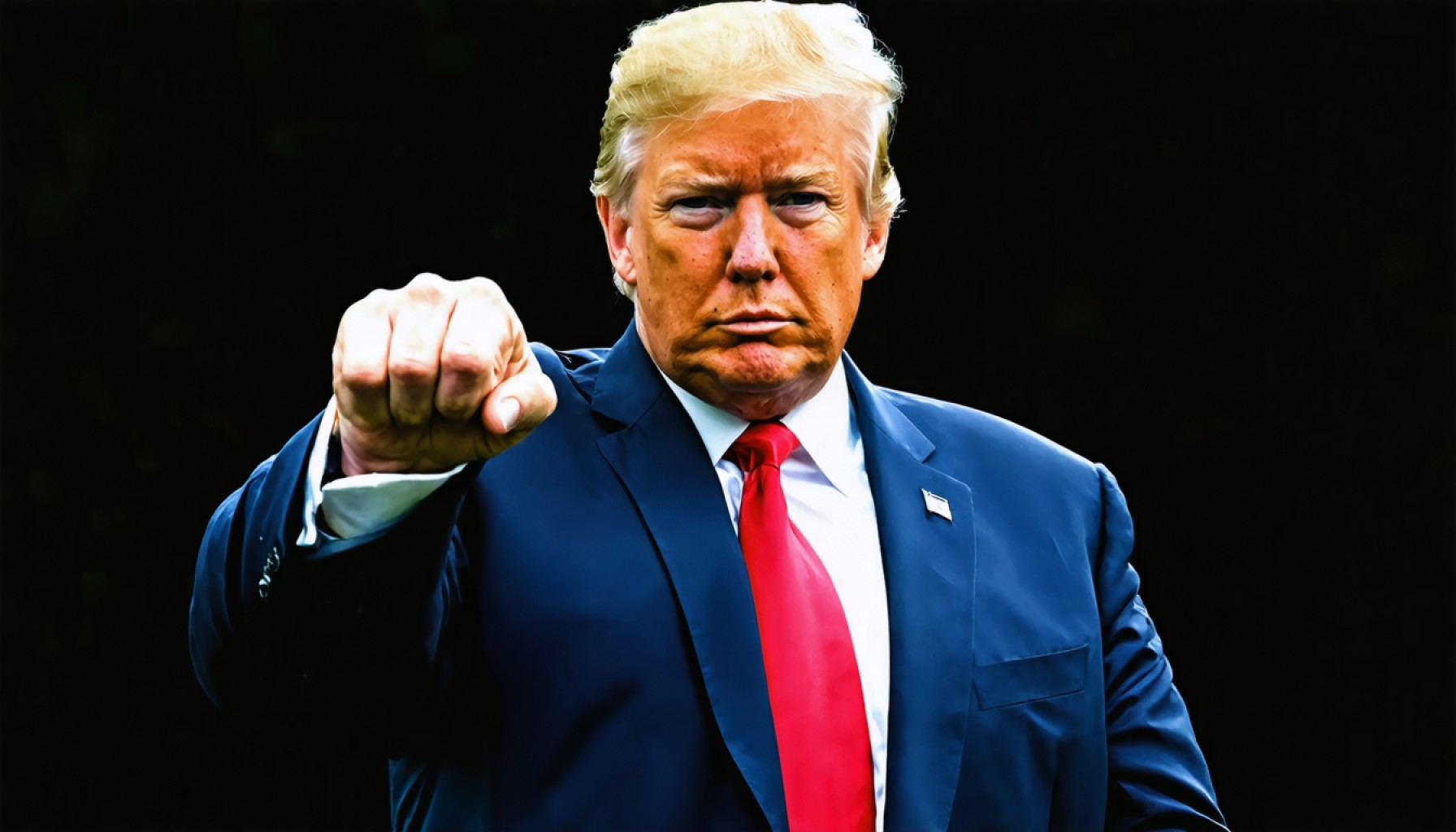- President Trump’s new tariffs send ripples through global markets, sparking debates on their strategic intent.
- Morgan Stanley strategist Mike Wilson views the tariffs as potential preludes to deeper trade negotiations.
- A complex trade situation emerges, with high-stakes tariffs impacting Chinese goods and looming threats to EU imports.
- Despite challenges, Wilson forecasts the S&P 500 could reach between 5,800 and 5,900, contingent on improved earnings and favorable trade conditions.
- If tariff pressures increase, the S&P 500 could instead face a decline to around 5,500.
- Investors must discern whether tariff actions are strategic dialogues or signs of economic turbulence.
- A comprehensive understanding of the interplay between politics and economics is essential in navigating market dynamics.
A ripple courses through the global markets as President Donald Trump rolls out a fresh wave of tariffs, leaving investors to decipher if it’s a strategic maneuver or a looming financial storm. Against this backdrop, Morgan Stanley’s seasoned strategist, Mike Wilson, stands in the eye of the whirlwind with a meticulous analysis that suggests a complex game of trade chess is in play.
Wilson, with an astute eye honed over 35 years of market ebbs at Morgan Stanley, interprets Trump’s latest tariff tactics as a possible precursor to deeper negotiations, rather than the final resolution. Flanked by imposing tariffs on Chinese goods, whispers of threats to EU imports, and a tentative ease on Mexican and Canadian levies, the tariff saga unfolds like a high-stakes novel. Meanwhile, Asian economies brace for targeted product-level tariffs, awaiting their turn on this intricate trade board.
What does this multifaceted maneuver mean for the financial markets? Here, Wilson takes a realistic stance. Even with guard-railed tariffs, he sees an S&P 500 aspiring for heights within the 5,800 to 5,900 range. Yet, a peak as aspirational as 6,100 in the initial half of the year demands not just gentle tariff touches but a renaissance in earnings — a shimmer not yet evidenced in current index figures.
To reach these elusive heights, the market craves news brighter than forecast, perhaps no more than a breeze flitting through open trade windows. Alternatively, the market trudges to a sobering 5,500 amidst tougher-than-anticipated tariff storms: expanded EU levies, a stark 10% surcharge on Chinese imports, and new constraints on countries like Vietnam, Japan, Korea, and India.
As March concludes, the S&P 500 languishes, charting a 6% decline. Yet, within this maelstrom, Wilson sees not just threats but opportunities—a narrative of industry-specific impacts forging new contours in the global economy.
Together, investor eyes watch this unfolding drama, pondering if Trump’s tariff acts are a strategic bluff enticing dialogue or the herald of an economic tempest. The key takeaway resonates: meticulous analysis and comprehensive understanding remain invaluable as markets traverse this dynamic interplay of politics and economics.
Unveiling Trump’s Tariff Strategy: Could This Be a Game-Changer for Global Markets?
The Current Landscape of Global Markets
The implementation of President Donald Trump’s new wave of tariffs has sent shockwaves through global financial markets. Investors and analysts alike are scrambling to determine whether this is a strategic play or the precursor to a broader economic storm.
Understanding Trump’s Tariff Strategy
President Trump’s tariff strategy, especially his latest move against China and potential threats towards EU imports, suggests a complex negotiation tactic. The easing of tariffs on Mexico and Canada juxtaposed against heightened risks for Asia reflects an attempt to rebalance trade relations globally.
Insights from Mike Wilson at Morgan Stanley
Mike Wilson, whose extensive experience at Morgan Stanley lends weight to his analysis, sees these tariffs not as an endgame, but rather as a step towards more profound negotiations. Wilson outlines potential paths for the market:
1. Optimistic Scenario: If the tariffs lead to fruitful negotiations and improved earnings, the S&P 500 could potentially rise to the 5,800 – 5,900 range.
2. Pessimistic Path: However, if tariffs intensify without resolution, a drop to around 5,500 is possible. This would be exacerbated by expansions of EU levies and significant surcharges on Chinese imports.
Real-World Use Cases
1. Investment Strategies: Investors need to stay informed and agile, considering both defensive and aggressive strategies depending on their risk tolerance and market predictions.
2. Business Adjustments: Companies, especially those involved in import-export, should diversify supply chains to mitigate risks tied to specific regions affected by tariffs.
Market Forecasts & Industry Trends
Wilson’s predictions provide a reference point for market participants. The need for robust corporate earnings to support market highs indicates a focus shift towards sectors demonstrating solid performance, such as technology and healthcare, which might weather tariff turbulences better.
Controversies & Limitations of Tariff Policies
Arguments remain on whether tariffs effectively enhance domestic industries or merely inflate costs for consumers. Critics argue that they might stifle international trade and economic growth.
Quick & Actionable Tips
– Stay Informed: Keep abreast of the latest trade negotiations and market analysis to anticipate changes.
– Diversify Investments: Allocate assets across industries and regions to cushion against sector-specific risks.
– Leverage Technology: Use financial tools and software to model potential market outcomes under different tariff scenarios.
Conclusion
While the path forward remains uncertain, combining meticulous analysis with adaptive strategies can help navigate these turbulent times. Investors, businesses, and policymakers must remain vigilant and responsive to evolving trade dynamics to safeguard against potential economic disruptions.
For more on finance and market insights, explore resources like Bloomberg or CBS to stay ahead of the curve.
